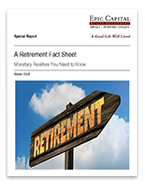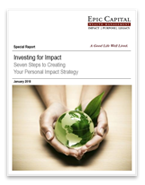Do Your Investments Match Your Risk Tolerance?
Aug 2, 2023

From time to time, it is a good idea to review how your portfolio assets are allocated – how they are divided among asset classes – and make sure they still match with your risk tolerance.
At the inception of your investment strategy, your target asset allocations reflect your tolerance for risk. Over time, though, your portfolio may need adjustments to maintain those target allocations.
Since the financial markets are dynamic, the different investments in your portfolio will gain or lose value as different asset classes have good or bad years. When stocks outperform more conservative asset classes, the portion of your portfolio invested in equities grows more than the other portions.
To put it another way, the passage of time and the performance of the markets may subtly and slowly imbalance your portfolio.
If too large a percentage of your portfolio is held in stocks or equity investments, you may shoulder more investment risk than you want. To address that risk, your portfolio holdings can be realigned to respect the original (target) asset allocations.
A balanced portfolio is important. It would not be if one investment class always outperformed another – but in the ever-changing financial markets, there is no “always.” In certain market climates, investments with little or no correlation (a statistical measure of how two securities move in relation to each other) to the stock market become appealing. Some investors choose to maintain a significant cash position at all times, no matter how stocks fare.
Downside risk – the possibility of investments losing value – can particularly sting investors who are overly invested in momentum/expensive stocks. Historically, the average price/earnings ratio of the S&P 500 has been around 14. A stock with a dramatically higher P/E ratio may be particularly susceptible to downside risk.1 *
Underdiversification risk can also prove to be an Achilles heel. As a hypothetical example of this, say a retiree or pre-retiree invests too heavily in seven or eight stocks. If shares of even one of these firms plummet, that investor’s portfolio may be greatly impacted.1
Are you retired or retiring soon? If so, this is all the more reason to review and possibly adjust the investment mix in your portfolio. Consistent income and the growth of your invested assets will likely be among your priorities, and therein lies the appeal of a balanced investment approach, with the twin goals of managing risk and encouraging an adequate return.
For more insights and resources, be sure to sign up for our Weekly Market Commentary. Follow our YouTube channel where we regularly post our Epic Market Minute videos. Follow us on LinkedIn, or like us on Facebook. And as always, please don’t hesitate to reach out to a dedicated service professional at Epic Capital.
Tags: charlotte NC, financial advisor charlotte nc, Investment Planning, Personal Finance, Retirement Planning, Risk Management
More Insights
Key Takeaways Volatility came back with a vengeance this week as selling pressure in the mega cap space dragged down the broader market. Counterbalancing weakness in these heavyweight names poses a challenge for the rest of the market. Overbought conditions can also be blamed for the recent weakness. The S&P 500 reached a 14.9% premium … Continue reading “Market Update – Assessing the Technical Damange”
Life insurance can be an excellent tool for charitable giving. Not only does life insurance allow you to make a substantial gift to charity at relatively little cost to you, but you may also benefit from tax rules that apply to gifts of life insurance.
When you think of Social Security, you probably think of retirement. However, Social Security can also provide much-needed income to your family members when you die, making their financial lives easier. Your family members may be eligible to receive survivor benefits if you worked, paid Social Security taxes, and earned enough work credits. The number … Continue reading “Social Security Survivor Benefits”
Information vs. instinct. When it comes to investment choices, many people believe they have a “knack” for choosing good investments. But what exactly is that “knack” based on? The fact is, the choices we make with our assets can be strongly influenced by factors, many of them emotional, that we may not even be aware … Continue reading “Making Investment Choices”
As a business owner, you should carefully consider the advantages of establishing an employer-sponsored retirement plan. Generally, you’re allowed certain tax benefits for establishing an employer-sponsored retirement plan, including a tax credit for establishing the plan and a deduction for contributions you make. In return, however, you’re required to include certain employees in the plan, … Continue reading “Retirement Plans for Small Businesses”
Services
Epic Capital provides the following comprehensive financial planning and investment management services: Learn More >


 Top of Page
Top of Page











